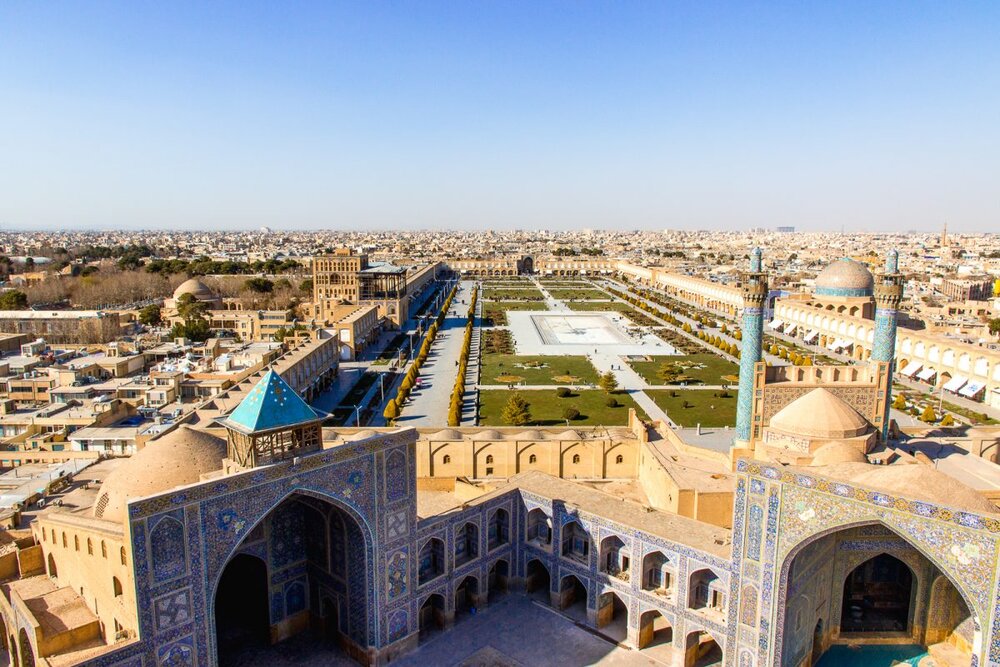Intricate details: feast your eyes on Persian tilework

One of the most common and significant decorative elements in Persian architecture is tilework. There is a wide variety of mosques, castles, mansions, churches, and halls, to name a few that have benefited from the expertise over time.
The glazed bricks that adorn the walls of Tchogha Zanbil, an ancient Elamite temple complex close to Susa, in Khuzistan, one of Persia's oldest examples of this technique, date to the 13th century BC.
The same method was applied during the Achaemenid era in the UNESCO-designated palaces of Susa and Persepolis, and a portion of it can be seen in two friezes known as the Lions and Archer's frieze.
Evidence suggests that Persian tile work reached its full potential during the Islamic period, and artists began exploring various methods and designs to elevate this art to its apogee.
Until the fifth century AH, the buildings were decorated with murals, but since the time of the Seljuk rule, widespread use of tile has become widespread.
Seljuk tiles were in the form of stars or crosses, and the best example is the holy shrine of Imam Reza (AS) in Mashhad. During this period, Kashan and Isfahan were among the most important hubs of tile production in the ancient land.
Here is a selection of historical structures adorned with impressive tilework:
Sheikh Lotfollah Mosque
One of the finest examples of tile in the Safavid era is Sheikh Lotfollah Mosque, which took some 20 years to build. The exterior of the mosque, entrance, corridor, and dome is covered with mosaic tiles. This beautiful mosque, its tiles are considered the culmination of Iranian tile art, was not a public mosque in its time, but a private prayer hall, with only the royal family and a group of Isfahan elders could use it.
The mosque was built by Shah Abbas the Great for one of the high-ranking clerics of the Safavid era, Sheikh Lotfollah Maysi al-'Amili (d.1622).
Due to the royal nature of the mosque, there is more boldness in applying colors. Also, at a certain time of the day, the reflection of light on the tiles makes a pattern of the dome which looks like peacock feathers and tails.
Imam Mosque
The unique tile style of Sheikh Lotfollah Mosque was replicated on a larger scale in Abbasi Mosque, known as the Shah's Mosque (now Imam Mosque).
Kashi-e Haftrang (Seven-colored tile) is made by putting together small square tiles and drawing a repetitive pattern on them. Although bold in color, its tiles are blue in their entirety. Moreover, all the motifs used in its decorations and designs are quite abstract, indicating the celestial nature of the mosque and its spiritual nature.
Moghadam Museum
Located on Imam Khomeini St., downtown Tehran, Moghadam Museum has a relatively complete collection of different Iranian tile styles of different eras.
The tiles, however, do not originally belong to this house but have been brought here by Dr. Mohsen Moghaddam, the late owner of this house, from other buildings - particularly the ruined Qajar-era palaces and mansions.
Although most of the walls of the front-house museum are covered with colorful tiles, the basement tiles are the most interesting because what is displayed in this section includes all kinds of Iranian tiles over a period of 900 years (from the fourth to the thirteenth centuries AH).
Holy shrine of Imam Reza (AS)
The domes of Imam Reza's Holy shrine are covered in very old blue tiles. These tiles are some 900 years old and are considered the best in the Razavi shrine complex. That part of the tile, which has eight-pointed shapes, is known as "Sanjari tile" and their installation dates back to the Seljuk period.
Also, the shine embraces arrays of octagonal tiles that bear both verses of the Holy Quran, and a very exquisite and distinguished title inscription from the works of the Kharazmshahi period (dated 612 AH).
Atiq Mosque Isfahan
Isfahan Atiq Mosque features a substantial collection of architectural styles and decorations. When it comes to tile arts, the two porches of the south and west of the mosque showcase some finest examples of intricate tilework. Both porches were built in the Seljuk period but were tiled in later periods (Ag Qiyyunloo and Safavid eras).
The south porch, known as Sahen Ebn-e Ebad, is a complete masterpiece of tile art, and the eastern porch is famous for its exquisite designs. Moreover, a very exquisite tile frame draws attention to the Kufic masonry line on the north wall of the porch. Some say the Iranian art of tilework has always been a mystery for tourists to discover.
AFM
Leave a Comment